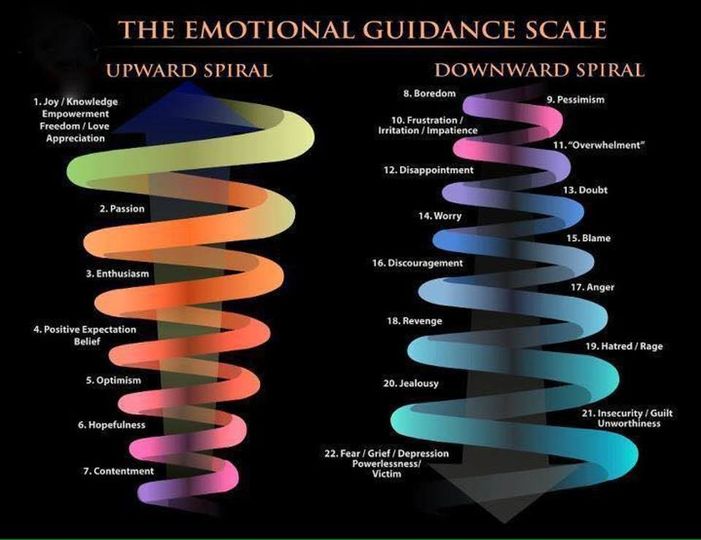Emotional Regulation: A 3-Step Process for Making Better Decisions

How Emotional Regulation Landed Me a $15k Client
In the early days of any service-based business, I think everyone makes at least one mistake in bringing on a “so-so” client simply because they’re willing to pay money.
For me, that client was JB.
Several red flags showed up early, like his goal to make more money so he could battle his crazy ex-wife for custody – followed by a lengthy explanation of all she did wrong.
But JB was excited to get rolling, really wanted my help and was willing to pay – albeit on a long term payment plan.
He was a good client at first, but I started noticing some issues after a couple of weeks. He would talk for our entire 1-1 calls, complaining about his ex-wife and the government. He was erratic and more information kept coming out about his situation that didn’t look promising.
After finishing his 12-week course and over the next 6 months, JB completely shifted and proceeded to self-implode publicly (possibly accelerated by COVID lockdowns). Not only was he openly anti-police and government, but he started becoming very outspoken as an anti-feminist.
I consider myself a feminist, and we had many strong and incredible women in our community group, including my wife. So, when he went on a viral anti-feminist tear on social media in the fall of 2020, I decided to end his ridiculously long payment plan (which he continued to have to bump and lower payments), and remove his access to the community group and calls, citing changes to our policies.
JB was not happy about this decision and turned his anger towards me, adding long-winded attacks toward me and my business to his social media, spewing bitterness about how bad of a coach I was and how worthless my program (that he technically didn’t even pay for) was.
During one of his multiple tirades, he also ripped on several recent physiotherapy grads, stating how horrible they were at their jobs.
At the time, I knew he was illegally training clients in his gym at the height of lockdowns and my first instinct was to take him down. I wanted to get a restraining order, shut down his gym and completely ruin him.
I knew he was on thin ice, having been arrested multiple times in recent months for various issues, including uttering threats to women online.
But a phone call with a lawyer friend and former client of mine allowed me to take a minute and calm down.
I didn’t know it at the time, but I was practicing emotional regulation – an incredibly valuable tool for any business owner. The phone call gave me just enough time to become aware of my emotional state, see the objective reality of the situation and make an aligned decision.
I realized that JB was going to ruin himself, and all I needed to do was step out of the way and let him do it.
This was very out of character for me, as I would normally be one who couldn’t resist throwing jabs back and ultimately getting the last word, part of a not-so-proud lifelong pattern dating back to my pre-teen years.
The very next week, I received a message from one of the physiotherapists JB had been berating online who asked me about my program. He had found me through JB’s tag on his Instagram stories and we immediately had something in common – we were both tormented by the same person online!
He joined my coaching program and became one of the best clients I ever coached, taking massive action and making changes, even in the face of having two toddlers and a pregnant partner at times.
He stayed with my programs for over 18 months, investing over $15,000 with me and we never would have connected if not for JB bringing us together through his IG rants.
Thank you, JB.
I like to think that the Universe paid me back for recognizing my patterns and responding in a different and more mature way than my instincts suggested.
JB was a mirror into what I needed to work on – emotional regulation. Once I passed the test, the Universe repaid me with an excellent client and someone I now call a friend.
The Emotional Guidance Scale
While this story illustrates emotional regulation in a situational context, I want to help you build this muscle on a daily basis, through thick and thin, no matter what is happening in your life or business.
I sincerely hope that you never get berated by a nothing-to-lose fugitive online, but in case you do, this should help you as well.
In hindsight, my response (or lack thereof) to JB’s taunts was thanks to me making a decision from a “higher frequency” than I originally planned to.
When I wanted to ruin him, I was coming from a place of insecurity, fear, rage, and revenge. On Abraham Hicks’ Emotional Guidance Scale, these fall at the very bottom of the downward spiral.
Unfortunately, when left unchecked, most of us make the majority of our decisions from the downward spiral or worse, near the bottom of the scale.
This is why emotional regulation matters.
Lack of emotional regulation can keep us from acting when we need to. For example, maybe we decide to keep an underperforming employee or stay in a bad relationship out of fear that we won’t find anyone better.
We decide to lower our prices when we hit a dry spell due to insecurity about our future and our own self worth.
But by seeking counsel and weighing my options, I moved my way up to a much higher ‘frequency’ on the emotional scale, which is where we want to be making the majority of our decisions on a daily basis.
If we were coming from a place of positive expectation and empowerment, we’d let the employee go or leave the relationship, knowing it’s better for both sides and fully expecting to replace them with a higher performer or better-suited mate.
If we were coming from a place of abundance and knowledge of our own value, we would keep our prices the same and work to deepen our conviction on sales calls.
*****
About a year later, I learned a 5-minute routine that I have called the Daily VIBE Check, which allows us to identify and regulate our emotions.
I suggest using this proactively on a daily basis, checking in with how you’re feeling and removing judgment from any emotions you’re feeling.
Then, in situations where you may need to check your emotions and respond instead of react, you can use this technique to calm yourself down.
This works great for entrepreneurs since our emotions are often all over the place and a lot can change over the course of one day or even one hour.
The Daily VIBE Check
Step 1: What am I feeling?
Since I struggle to identify my emotions, I use feelingswheel.com and search for 1-3 emotions that seem to land for me at the moment.
Step 2: What does it feel like physically?
The logical next question would be, “Why am I feeling this way?” and this is fair, but that question immediately gets you thinking logically about these emotions. And while there may be valid reasons, this could lead to judgment of yourself for feeling these emotions, which does not serve our purpose here.
Dropping into your body allows you to get out of your head and the logical brain that may have got you into this emotional firestorm in the first place.
So, quite literally, what are you feeling physically?
Are your hips tight?
Is your back sore?
Do you feel ‘light’?
Whatever it is, cool.
Write it down.
Step 3: What is this trying to teach me?
In the book, ‘Ask and It Is Given’ Abraham Hicks shares, “Your emotions are your most sophisticated interpreter of your vibration and the vibrations around you.”
Your feelings represent your inner guidance system. They act like a GPS, but most of us ignore them and take action in spite of what we’re feeling.
So, why not use the inner guidance system provided!?
Many high performers get hung up here in what may be right or wrong. Remember, there is no wrong answer here. When it comes to emotional regulation, whatever comes up, comes up.
The key here is that you checked in with your emotions and continued to learn how to regulate them in a low-stakes situation.
BONUS: Do I need to “reach for a better feeling thought”?
You saw the emotional guidance scale earlier and may be wondering, “what if my emotions are low on the scale, or even at the bottom?” This is your opportunity to reach for a better feeling thought.
Are you angry (#17) at your employee for not doing what you asked, or is it possible you may be feeling worried (#14) that they weren’t the right hire?
Are you worried (#14) or is it possible that you’re feeling disappointed (#12) in their lack of attention to detail (or yours, for that matter)?
Are you disappointed (#12) or is it possible you’re feeling frustrated and impatient (#10) with how slowly they’re progressing?
In 3 questions, we just moved from #17 to #10, simply by having them think about what they’re actually feeling. This moved the decision-making compass from near the bottom of the downward spiral to a more neutral place.
This is a much better place to make decisions from.
So I encourage you to practice the Daily VIBE Check proactively for one week. Write down all your findings and see how you respond to situations throughout the day.
If something big and scary comes at you (as it most likely will), use it as an opportunity to practice emotional regulation and apply these questions in the moment.
Please share in the comments what comes up for you this week or email me at gavin@craigballantyne.com. I’m happy to help you work through whatever may be going on in that entrepreneurial brain of yours.

